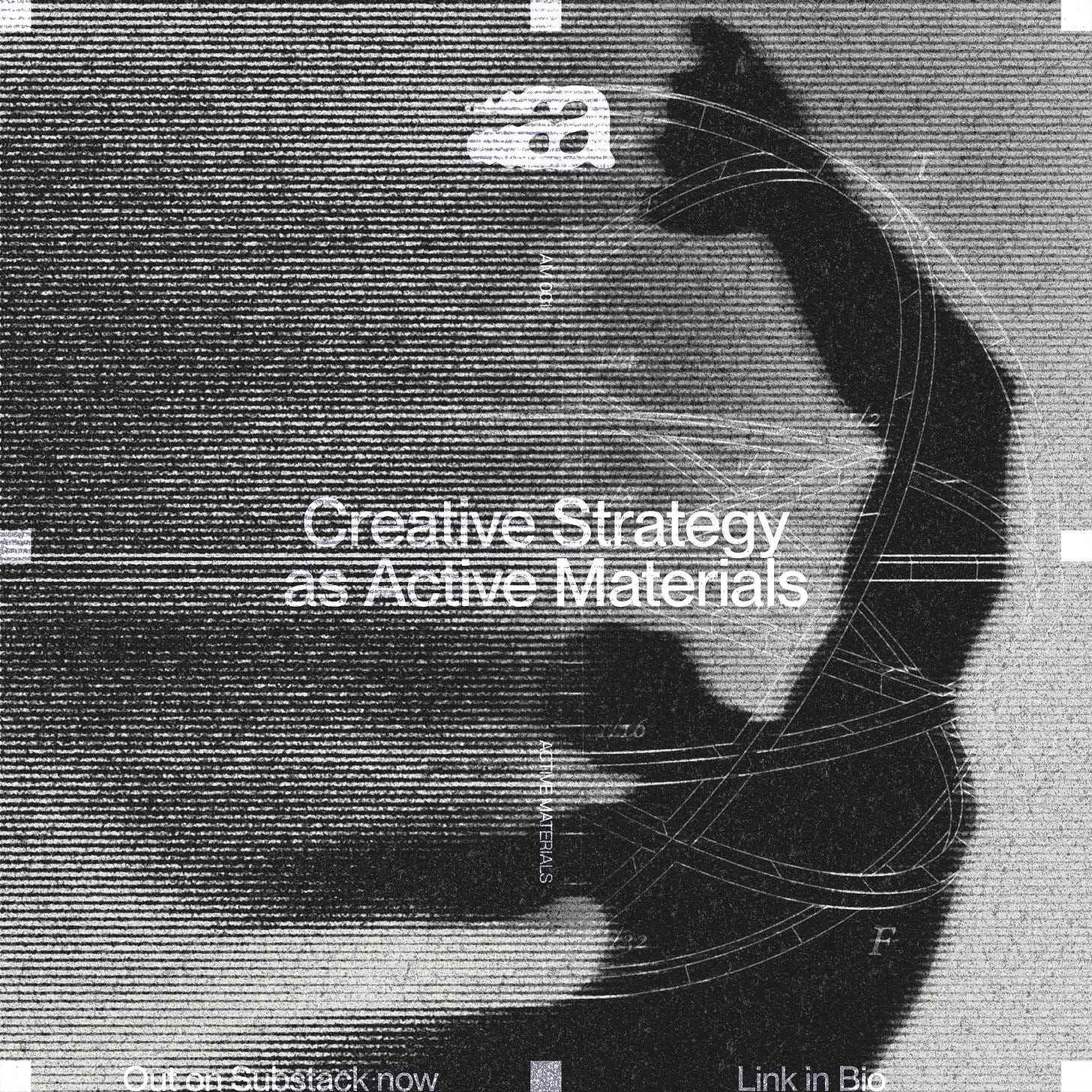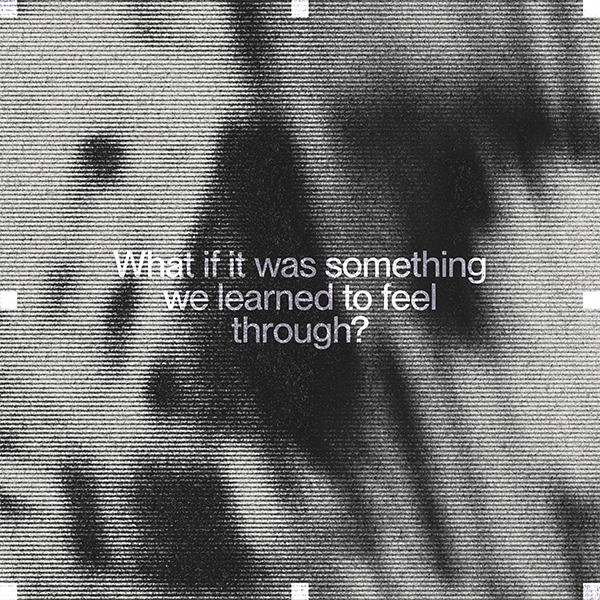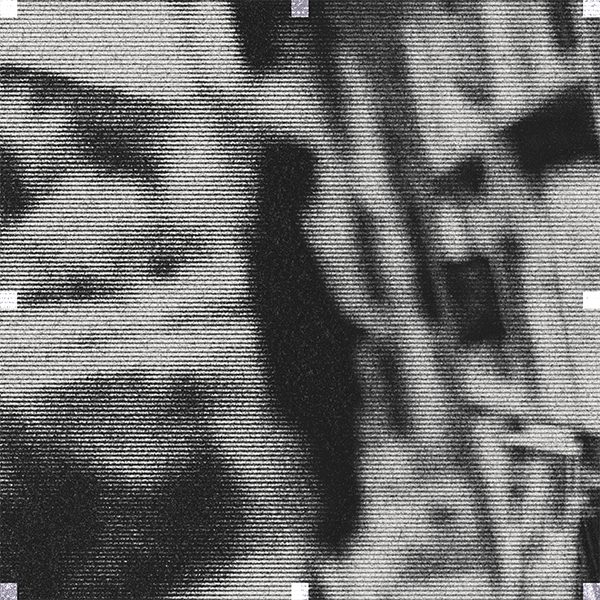Creative Strategy as Active Materials
Rethinking how we work with ideas in a world that won’t stand still
Active Materials is a newsletter by Jordan Willis for creative strategists exploring the intersections of art, culture, and technology. Browse the archive to dive deeper.
If this found its way to you, and you’d like more, subscribe below.
Introducing Active Materials
What happens when we stop seeing strategy as a fixed proposal and start approaching it as something alive?
A dynamic, evolving material. A shape that responds, adapts, and invites ongoing interpretation.
About a month ago, I was flicking through a book on materials for design professionals. In materials science, the term ‘active materials’ refers to matter that senses and responds to its environment. Think shape memory alloys that return to form when heated, or soft robotic actuators that bend and twist with pressure. Inherently fluid forms where their meaning changes through interaction.
Could this be a useful metaphor for creative work?
A lens to view creative strategy as something in motion, never fully finished. That’s what I want to explore here. This blog is a starting point. Through art, culture, and technology, maybe creative strategists and curious thinkers can uncover better ways of working with ideas that are alive, active.
The Myth of Eternal Strategy
Culture moves faster, always seemingly getting faster. Brands rush to keep up, hoping to sync with what’s trending. But that urgency can backfire, and traditional business planning can lock us into assumptions that no longer hold by the time a campaign hits the ground.
Strategy can and should be more than a static document or deck. What if it was something we learned to feel through? A kind of attention to the emotional rhythms, unspoken tensions, and shifts in the world around us?
Just look at how quickly meaning reshapes itself online. Meme culture moves so fast. The post-ironic humour of Italian brainrot memes transforms into a comical ‘who would win in a fight between 100 men vs. 1 gorilla’ masculinity contest. We remix, amplify, reinterpret.
In this environment, strategy in a ‘planning’ sense is about being comfortable with constant change. Learning to ride waves rather than wanting to create them ourselves. It becomes about freedom of movement. If the world is moving, maybe strategy needs to move with it, like an active material.
Strategy as Movement
To embrace strategy as movement, we can look to ancient thinking. Process philosophy provides a lens to see the world as continuous change rather than a permanent state. Ancient Greek philosopher Heraclitus put it as so:
“All entities move and nothing remains still”
Creative Strategy, too, is never still.
So, perhaps we should understand strategy less as a fixed discipline and more as a movement practice. Social anthropologist Tim Ingold describes creativity as a meshwork of lines and gestures, continuously shaped by the moment. Dance choreographers build meaning from how bodies respond to space and time. Yes, they plan, but they leave room for experimentation with their environment.
Watch the aggressively intimate dance performances of rapper-dancer Blackhaine and you’ll see what this looks like in action. His movement language is jagged, urgent, reactive.
That’s the kind of fluidity we’re trying to imagine.
This movement-oriented approach is increasingly visible today. As tools become increasingly generative and adaptive, like Microsoft’s Copilot or our increasing attachment to ChatGPT, workplaces naturally begin to value flexibility and responsiveness. Teams are shifting toward flexible, generative modes of working, embracing strategy as a living, breathing practice.
Interpretation and Infrastructure
Even movement needs infrastructure. A friend recently played me Keith Jarrett’s ‘The Mourning of a Star’. The adventurous 1971 free jazz album taps into the idea of creative movement as spontaneous improvisation. But behind the improvisation is Jarrett’s meticulous preparation: years of practice, intuition, and emotional groundwork that allow each juxtaposed harmony to unfold meaningfully.
That’s strategy too.
Artists understand this. Consider an Olafur Eliasson installation: beneath sensory experiences of mirrors, light, and fog is a deliberate infrastructure that guides emotional and perceptual responses. Good strategy works similarly. Like active materials, its structure enables interpretation.
Maybe strategy isn’t about having a plan but having a posture. An openness to context, a readiness to respond.
Learning to Live
Today’s business environment continually pushes organisations to become more agile. Requiring them to be stable enough to operate reliably, yet dynamic enough to adapt quickly. Companies need to build flexibility into how they work, without losing coherence.
In 2018, McKinsey likened these agile organisations to ‘living organisms’.
The ability to swiftly sense and respond to changes in an environment is a key competitive advantage. This dual nature fascinates me. Stability creates a safe space for risk-taking, experimentation, and continual learning. Perhaps the real task of strategic agility is to nurture responsiveness. It means embracing uncertainty, empowering small teams, and cultivating responsiveness as a way of working.
When strategy becomes a practice of learning how to live with change, organisations can move fluidly, becoming active participants in their unfolding narratives.
A Strategy that Breathes
Active Materials is a starting point. One that sees creative strategy as a fluid medium, constantly shaped by context, crafted through movement, and nurtured in dialogue. A living, breathing practice.
If strategy is an active material, I like to think of its human form like a ‘living’ room.
What if we stopped treating strategy as a logical win-or-lose scenario and began treating it as a living room instead? A space we continually arrange, rearrange, and grow with. A space we move through.
Let’s sit with that for a moment. If strategy is a living room, perhaps our work lies in keeping it rearrangeable, welcoming, open, and always ready for new conversations.
Let’s stay in this room for a while.
Your Curiosity Means a Lot
Active Materials exists to build a community of curious individuals, people open to new ways of seeing, making, and understanding the world. Learn more about us here. In the archive, you can find other ideas to explore.
Enjoyed this? Send it to a friend.
Interested in collaborating or contributing?
Comment below or send me a message at hello@jordanwillis.xyz to get in touch.








